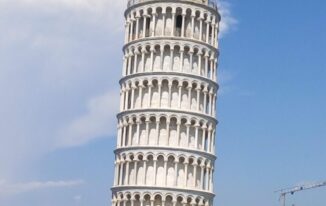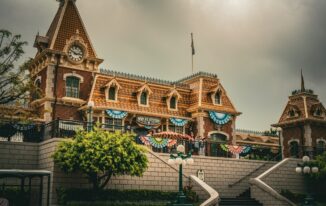It’s great when you have a tourist trip to Pisa planned. It’s a wonderful city and there’s a lot to see. But even if you’re just passing through and have only a few hours, don’t waste them. Even in this short time, you can still get new impressions. Put your luggage in the nearest luggage storage Pisa can offer and head out to meet new impressions.
The Leaning Tower of Pisa’s Guy Anchors
The 12th-century Leaning Tower of Pisa is one of the most recognizable tourist attractions in the world. You’ll find its image on a pile of souvenir shop trinkets, or in funny photos of friends trying to “prop it up.” Still, few people notice the two large (and decidedly non-medieval) engineering anchors just outside the Pisa Cathedral.
These large, white contraptions are the remnants of a unique, elaborate engineering project undertaken in the late 1990s and early 2000s to stabilize the iconic tower. Despite the beauty of its tilt, after decades of debate about how to keep the ancient structure from reaching a tipping point, a plan was eventually devised to return the tower to a less extreme tilt using a complex system of guy ropes and counterweights.
Now, decades later, the only remnants of the massive restoration are these two anchors, located just behind the toilets, north of the cathedral. The tower’s history goes back almost to the very beginning of its construction, which took nearly two hundred years to complete. The land on which it stands is entirely unsuitable for such a tall and narrow structure, as the foundations are mostly sand and clay. The tilt was noticed only when the third tier was built, and the weight of the marble compacting the loose soil only exacerbated the issue.
In 1990, a team of engineers devised a plan to use guy wires and lead counterweights to temporarily stabilize the tower while a drill removed some of the soil. It helped reduce the tilt just enough to keep the tower stable, but not so much that tourists would be able to notice.
Guy lines were attached to the third tier, held in place by these two anchors, and a counterweight of lead blocks was added to help straighten the structure a bit. Once the work was completed, the guy lines that ran across the entire square were removed. The anchors, despite their awkward appearance, remain, a reminder of the remarkable feat of engineering that corrected the builders’ mistakes many centuries ago.
Tuttomondo
In 1989, while on vacation in New York, Piergiorgio Castellani, an anthropology student, encountered the famed artist Keith Haring. Haring invited Castellani to visit his studio, where they developed plans for a mural on the wall of a church in Pisa.
Haring typically completed his murals in one day, but this piece took four. Help came from local students and a paint store that donated materials. The mural was one of the artist’s last public works before his death from AIDS in 1990.
The resulting piece on the wall of the Church of San Antonio is the largest mural in Europe, measuring 10 m high and 18 m wide. The theme of the painting is world peace, as evidenced by the title “Tuttomondo”, which translates as “The Whole World”, or simply “Everything”.
Each figure represents a different aspect of the world – for example, a woman with a baby represents motherhood, “human scissors” cutting off a snake’s head demonstrate victory over evil, and people with dolphins symbolize humanity’s relationship with nature. The yellow figure walking towards the famous Leaning Tower of Pisa represents the viewer, who could be you.
Haring stayed at the hotel directly across from the fresco. Now it’s an art-themed cafe where you can buy reproductions of his work and drink hot chocolate. The cafe is open Monday through Saturday from 7:00 a.m. to 9:00 p.m., and Sunday from 12:00 p.m. to 8:00 p.m.
Other Options
The Leaning Tower of Pisa is not the only one in Pisa. You can also see the ancient Torre Guelfa. If you are an architecture lover, be sure to check out the Church of Santa Maria della Spina. Not far from each other are two interesting structures: the Ponte di Mezzo bridge and the Porta di Santa Marta arch. In other words, make sure to use even a short stay in Pisa to see as much as possible.


